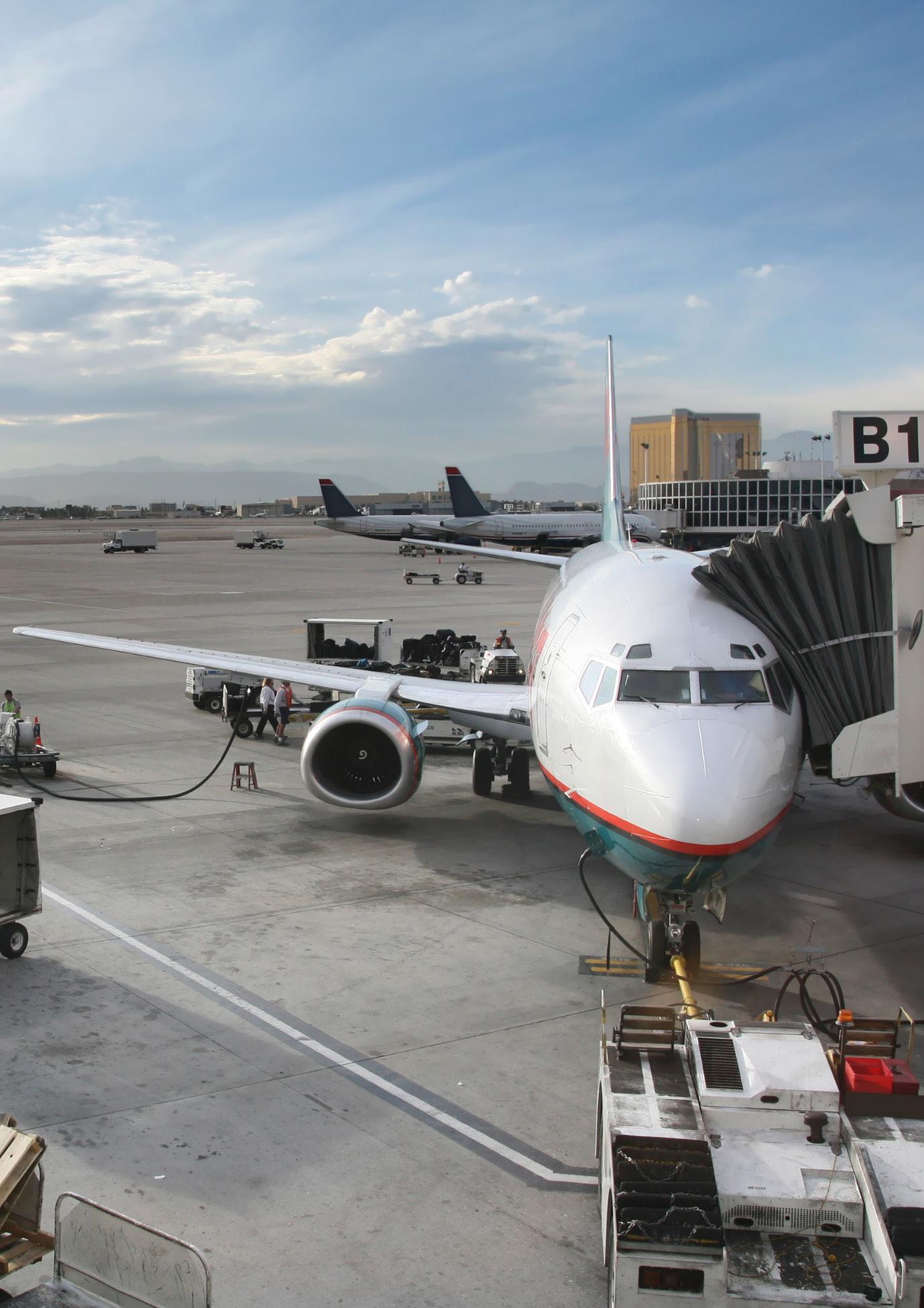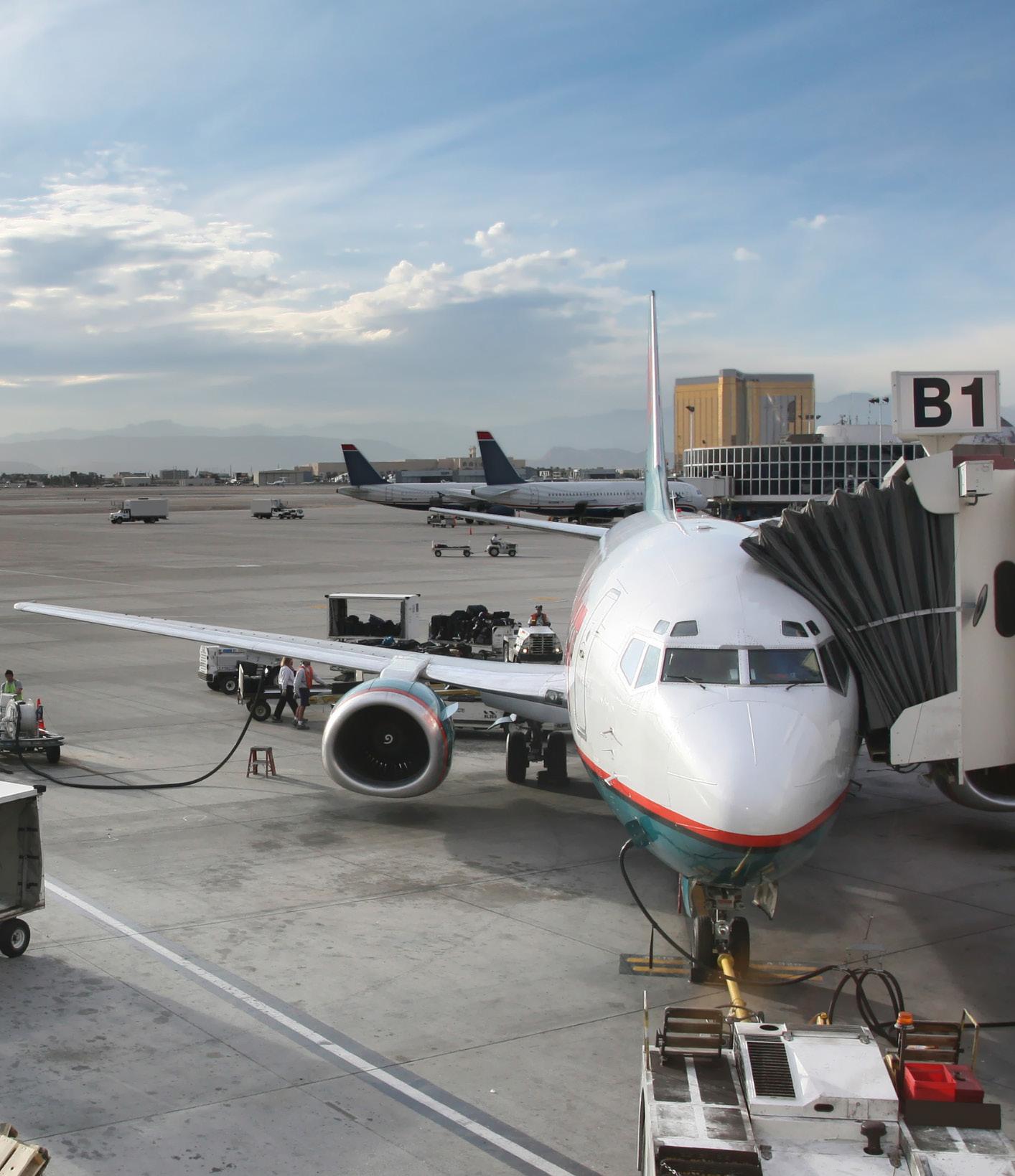




The continuous development of the digital ATM system brings many benefits, including greener aviation. Solutions that provide more precise route planning and traffic management, and that consider real-time weather data, with optimised flight profiles, will reduce fuel consumption and CO 2 emissions.

The Frequentis Orthogon Arrival Manager (AMAN) has saved more than one million tons of CO 2 emissions globally within its 20 years of operations. The extended AMAN has the ability to unlock additional CO 2 savings and is supported by ICAO Aviation System Block Upgrades and SESAR.
The number of globally deployed AMAN is growing. Join us in supporting sustainable aviation. www.frequentis.com
Winner ATM Maverick award 2021 for sustainabilityoperations greener, safer and more streamlined.
Dear Readers,
Welcome to the 2022 issue of our Airport Industry-News e-magazine.
One of the fallouts from the pandemic, which of course resulted in a huge drop in passenger numbers, has been a large reduction in airport staff.
This is having many knock-on effects, such as a loss of knowledge, as discussed by Frequentis in their piece Digitalisation of Airport Operations on p.30.
Assaia (p.24) points out the consequence of airlines having to cap or cancel flights at a time when the industry has had a very painful couple of years. They also identify decarbonisation as another major trend in the airport sector right now.
Both Frequentis and Assaia view harnessing the power of data and artificial intelligence as a way of combatting this staffing shortage as well as making airport

Our contributing writer Tiana May has looked at airside automations, exploring how autonomous vehicles could be deployed in this context. Airside operations take place in a highly controlled environment and are therefore perfectly suited to autonomous vehicles as the operational design domain is also very controlled. Autonomous vehicles here too help address a shortage of staff and can bring environmental benefits. Examples include using autonomous vehicles to tug aircraft all the way to the runway, avoiding the need for using jet fuel and avoiding the need for a driver who would ordinarily operate the tug.
Our 2023 issue of our Airport Industry-News magazine will be published on 26 September. In it we will feature inter airport Europe, which will take place in Munich from 10 to 13 October.
If you want to be featured on the Airport Industry-News website or in our e-magazine, please email Andrew Lush or call +44 7432 725001.
Please enjoy our 2022 issue!
Josephine Cordero Sapién, editor-in-chief

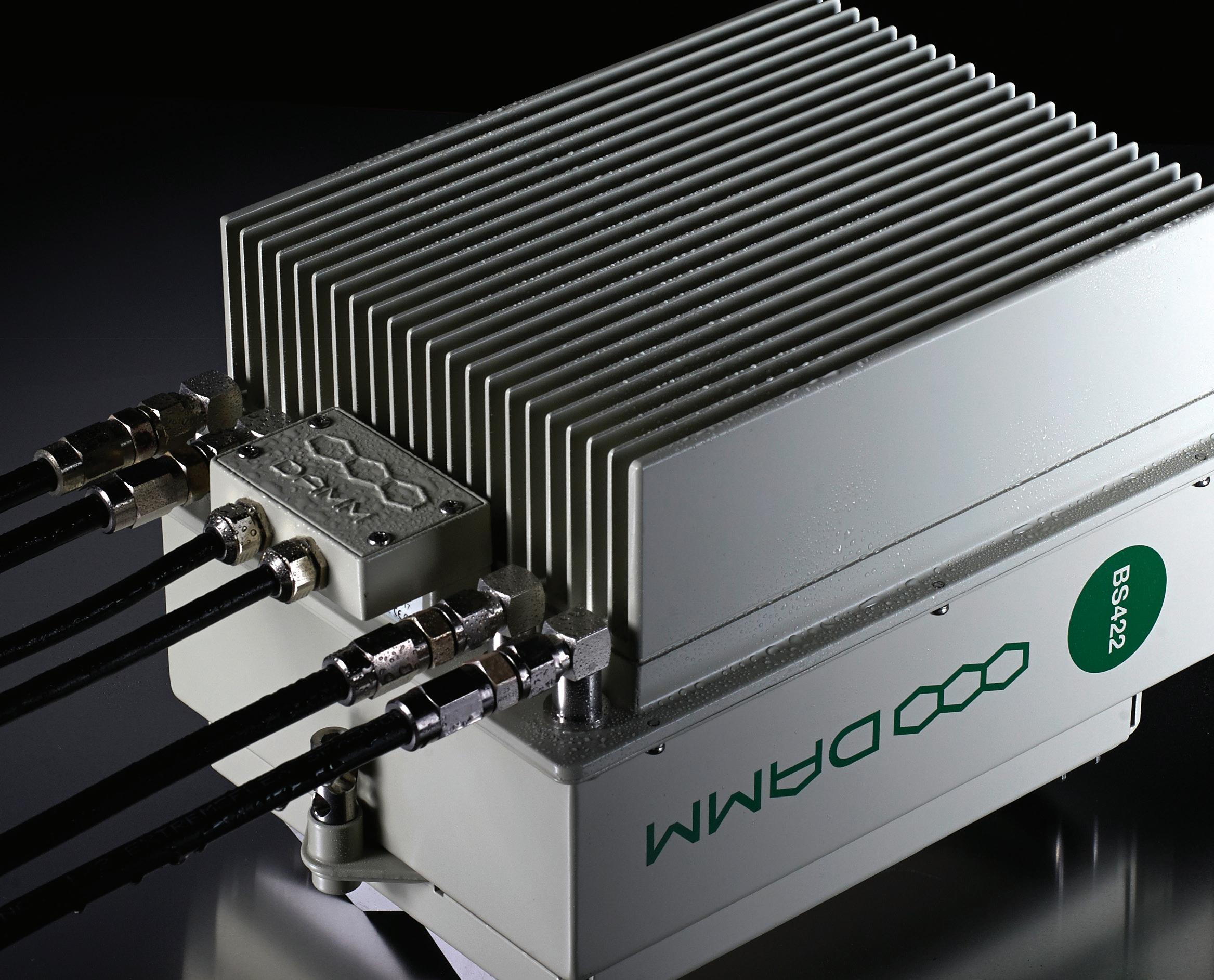






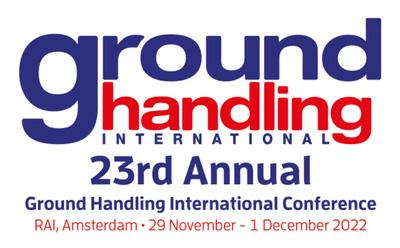








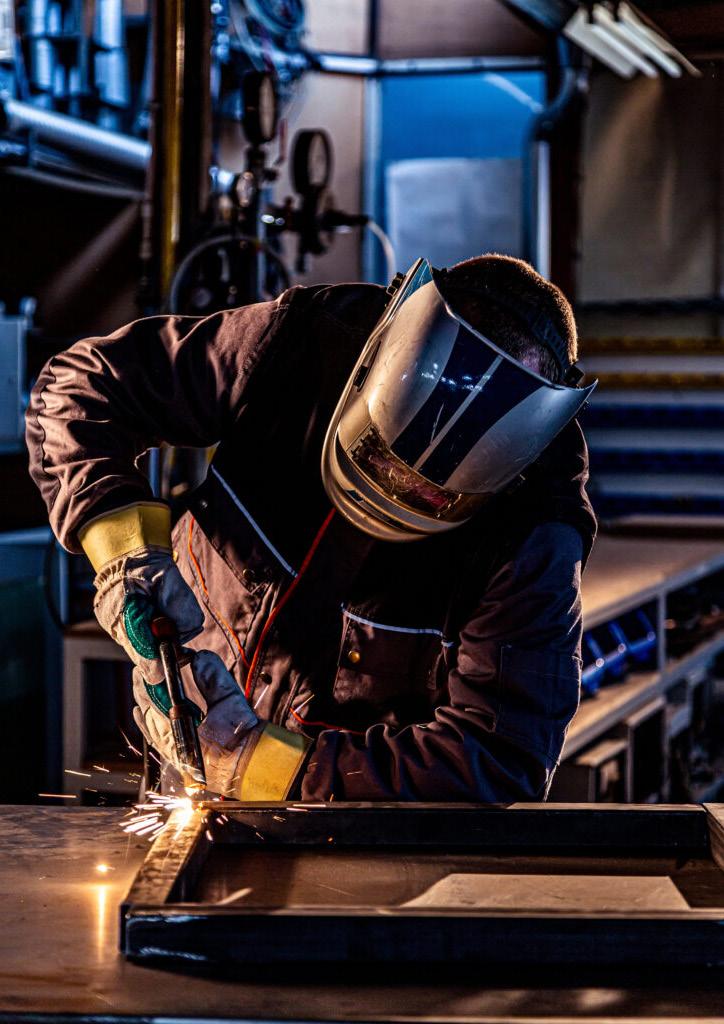




As the aviation industry recovers from the pandemic, passenger numbers continue to rise and many airlines are finding that they no longer have the airside staffing capacity to efficiently handle demand. This has led to delays for aircraft scheduled to take off and land, as well as for passengers waiting to disembark or collect their luggage.
To combat these issues and make operations safer and more efficient, many airports and airlines are starting to deploy autonomous solutions as part of their ground handling services. In the Netherlands for example, Royal Schiphol Group anticipates that its airside operations will be fully autonomous by 2050. This will include
autonomous luggage vehicles, self-driving passenger buses, autonomous tow trucks and automated passenger bridges, which will all be controlled by an interconnected AI-powered traffic management system.

Airfields are a complex yet controlled environment in which autonomous vehicles have the potential to be safely deployed and managed, enabling people and baggage to be transported without a driver.
Although autonomous vehicles are not yet used to

transport passengers on the airfield, they have been deployed to safely carry airport and airline staff. For example, All Nippon Airways (ANA) has conducted several trials using autonomous buses in restricted areas at Tokyo Haneda Airport. These operations are part of ANA’s vision for a ‘Simple & Smart’ airport that incorporates the widespread application of autonomous technology and eases the workload for employees, while also improving service efficiency for its passengers.
Likewise, Schiphol Airport has been trialling autonomous baggage tractors that will transport passenger luggage between the sorting area and the aircraft. These trials advance the airport’s Autonomous Airside Operations programme and aim to demonstrate how self-driving vehicles could be integrated with other airfield traffic. However, such vehicles still require ground staff to load and unload the tractors, thus highlighting scope for further automation to reduce the manual labour demands.


Self-driving vehicles could be used to conduct autonomous operations and services beyond transportation. For example, in Germany, Stuttgart Airport is currently deploying autonomous snow clearing vehicles that remove snow and ice from runways, taxiways and aprons without a driver. With this system, the movement of the autonomous truck and the operations of the autonomous sweepers are controlled by the same platform, using Aebi Schmidt Group’s AirfieldPilot technology.
Meanwhile, Hong Kong International Airport is also leveraging autonomous service vehicles by deploying four self-driving Teksbotics patrol cars that use video analysis to automatically detect if someone has entered a restricted zone on the airfield. These vehicles were introduced to replace routine patrols with a human driver with the goal of minimising errors.
In addition to self-driving vehicles, elsewhere in Asia, Kansai Airports is currently implementing Japan’s first fully automated system to attach boarding bridges to aircraft at Osaka International Airport. This system identifies aircraft doors using AI and image recognition technology, and attaches the boarding bridge without a manual process. This use of automation is expected to improve safety and facilitate smooth boarding and disembarking processes by preventing human error.


These use cases demonstrate how autonomous technology could improve airfield operations while also placing fewer demands on airport ground staff. Although such technology requires a significant upfront investment, it is also ultimately expected to reduce long-term operational costs.
Alongside improving efficiency and minimising staffing demands, autonomous technology could be applied to reduce airfield emissions. For example, autonomous towing vehicles could allow aircraft to travel on the ground for greater distances without using jet fuel.
TaxiBot aircraft tractors are already in operation at several airports. Conventionally, aircraft are towed to / from their gate but then taxi using jet fuel. These semi-autonomous electric vehicles extend the towing distance all the way to the runway without needing to deploy a human driver. The benefit is that they can then power the taxiing process so that the aircraft’s engines can stay switched off until just before take-off.
The taxiing process remains in the pilot’s control through remote operation of the TaxiBot. In addition to reducing greenhouse gas emission, this process also cuts down on noise pollution.
Consequently, autonomous technology could be the future of airfield operations and ground handling activities, allowing aircraft and passenger movements to become safer and more efficient. However, it is evident that many of these deployments remain in the early stages, offering significant potential to scale and expand the technology in the future. This would allow staff to take on more of a customer service-focused role to further enhance the passenger experience at airports.



In June this year, Farnborough Airport, Europe’s leading airport for premium air travel connectivity and the home of British aviation, launched its ‘Net Zero Roadmap’, establishing one of the most ambitious net-zero targets in the aviation sector.


Jewers Doors manufactures the world-renowned Esavian aircraft hangar doors and the Phoenix industrial sliding and folding doors range.

Originally established as a civil engineering firm in the 1960s, the company was founded by Terry Mallaghan and has now become one of the leading aviation industry suppliers in the manufacture of airport ground support equipment, producing highly acclaimed GSE products to an everexpanding global network of customers.
Directory p.20
p.14 p.18

In June this year, Farnborough Airport, Europe’s leading airport for premium air travel connectivity and the home of British aviation, launched its ‘Net Zero Roadmap’, establishing one of the most ambitious netzero targets in the aviation sector.


Titled ‘Roadmap to Net Zero by 2030 – Where will you be?’, the Farnborough Airport Company is committed to be net zero across its controllable emissions by 2030 or sooner. This will result in a 91% reduction of those emissions.
As the largest business aviation airport in the UK and having become the first in the world to achieve carbon neutrality in 2018, Farnborough Airport is progressing its strategy to become a global showcase for airport sustainability through the launch of its Net
Zero Roadmap. As Farnborough Airport CEO Simon Geere explains: “When it comes to supporting the decarbonisation of the aviation industry,we want to lead the way at Farnborough Airport,which is why we have set ourselves one of the most ambitious targets in the industry,by committing to be net zero across our controllable emissions by 2030 or sooner.Put simply,we want our customers to increasingly choose Farnborough Airport because of our sustainability credentials,alongside our market leading state-of-theart facilities and our exceptional levels of customer care.”
The roadmap outlines Farnborough Airport’s commitment to be net zero for its controllable emissions by 2030 and a pathway to do so. This covers the reduction of emissions from buildings, the airfield and on-site operational vehicles. By 2035, It has also committed to targeting a reduction of its controllable emissions and those it has partial influence over by
over 40%. This includes emissions from the landing and take-off (LTO) cycle of aircraft up to 3,000 feet, and surface access emissions generated by passenger journeys to and from the airport.
As part of the launch, Farnborough Airport also became the first airport in the world to offer sustainable aviation fuel (SAF) – which can reduce life-cycle CO2 emissions by up to 80% – at the same price as standard Jet A1 fuel for a trial period.
The airport first introduced SAF to its site in 2021. SAF’s increasing availability and demand are key components for reducing emissions generated by aircraft activity. At present, SAF production and purchase costs are a significant hurdle to its wholesale adoption across the aviation industry.
As part of its Net Zero Roadmap launch, Farnborough Airport is putting the spotlight on the importance of reducing the costs of SAF and signalling its intent to be a catalyst for change across the wider aviation industry.

“We know where we want to be,” Geere explains. “We want to continue to be the premier business aviation airport in the world,building upon our historic and pioneering legacy.We also want to set the benchmark for environmental performance within our sector.We are on a journey to be net zero by 2030 or sooner,where will you be?”
Prior to the launch of this roadmap, in April 2022 Farnborough Airport also announced that all diesel-powered cars on site would start operating on hydrotreated vegetable oil. Using HVO reduces net greenhouse gas emissions by up to 90%, so this transition marks a significant step in Farnborough Airport’s work to support the decarbonisation of the wider aviation industry.

Geere says: “The Farnborough Airport team recognises that climate change is a clear and pressing issue and is committed to minimising its environmental impact and improving environmental performance throughout its operations.The introduction of HVO is another milestone in our sustainability programme and an integral part in delivering against the government’s targets for net zero carbon emissions.”
The WP Group supplies HVO at Farnborough Airport. HVO is a paraffinic diesel, which can directly replace standard diesel, with no retrofitting required to the vehicle. HVO is produced from 100% sustainable renewable feedstocks waste, including used cooking oil, plant, food and animal waste, with each order accredited to the Renewable Fuels Assurance Scheme (RFAS). HVO is also EN 15940-accredited and other benefits include increased storage life, reduced NOx and PM tailpipe emissions, it’s not susceptible to ‘diesel bug’ and has a low freezing point.
WP Group’s Commercial Manager Mark Clouter commented, “It’s great to see Farnborough Airport switching to a renewable fuel.HVO offers an immediate way to reduce emissions,without incurring capital costs to change vehicles or equipment.WP is committed to our longstanding relationship with Farnborough Airport,providing a secure supply of the
latest products,technologies and fuel management supporting the airport’s sustainability programme.”

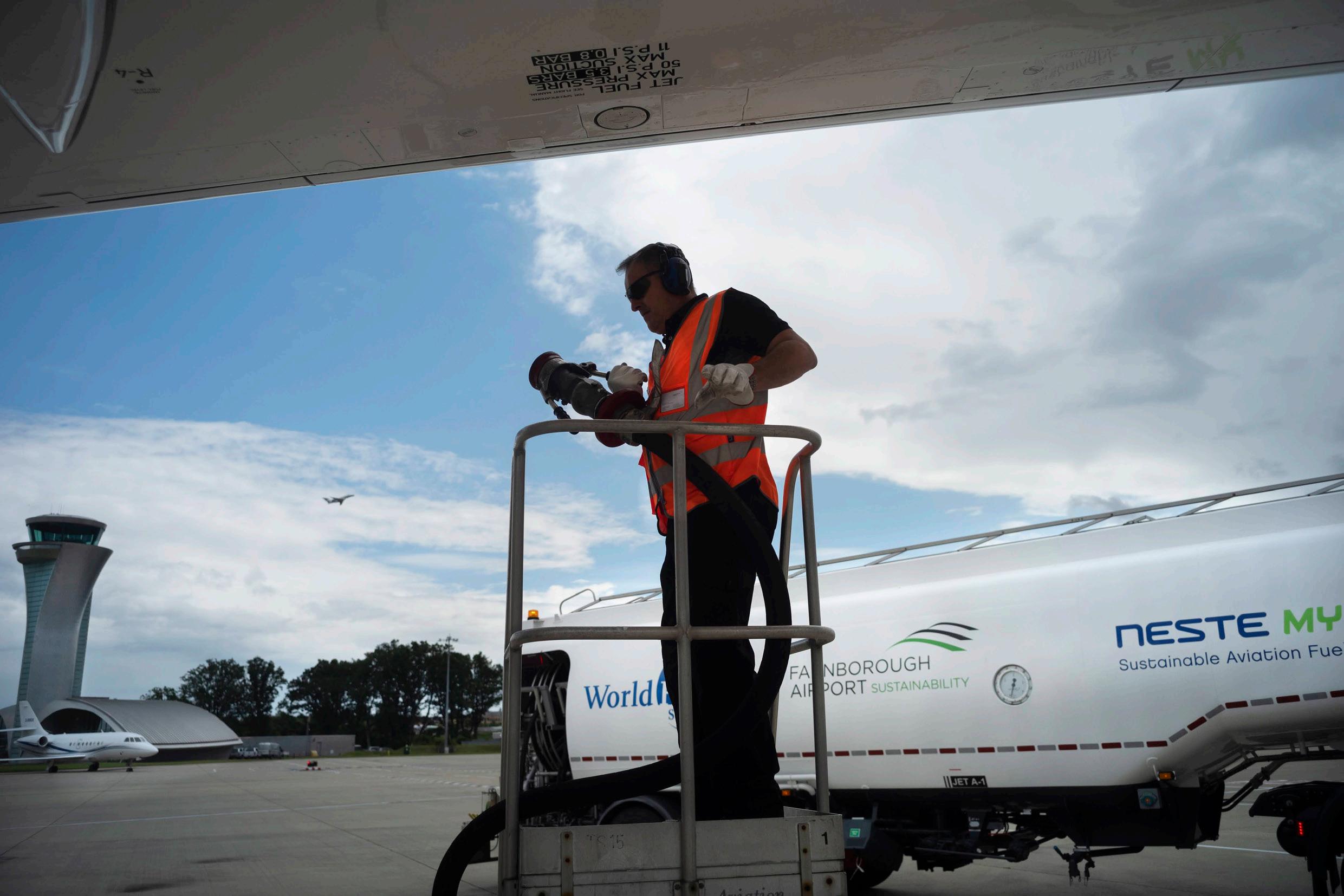

Farnborough Airport is thrilled to be working with WP Group on this new initiative, FBO Director Dominic Osborne says: “We are delighted to be working with WP Group to be able to use HVO at Farnborough Airport and continue to lead the way in reducing on-site emissions throughout all operations.As Europe’s leading business aviation airport,we strive to continually improve our services and give our partners the opportunity to make a greener choice by working with us.”
For more information, please visit farnboroughairport.com.

Crucial regulations for safety and performance in the aerospace industry are always advancing CoMech offers solutions to keep companies within the industry on track and ensure essential regulations are met
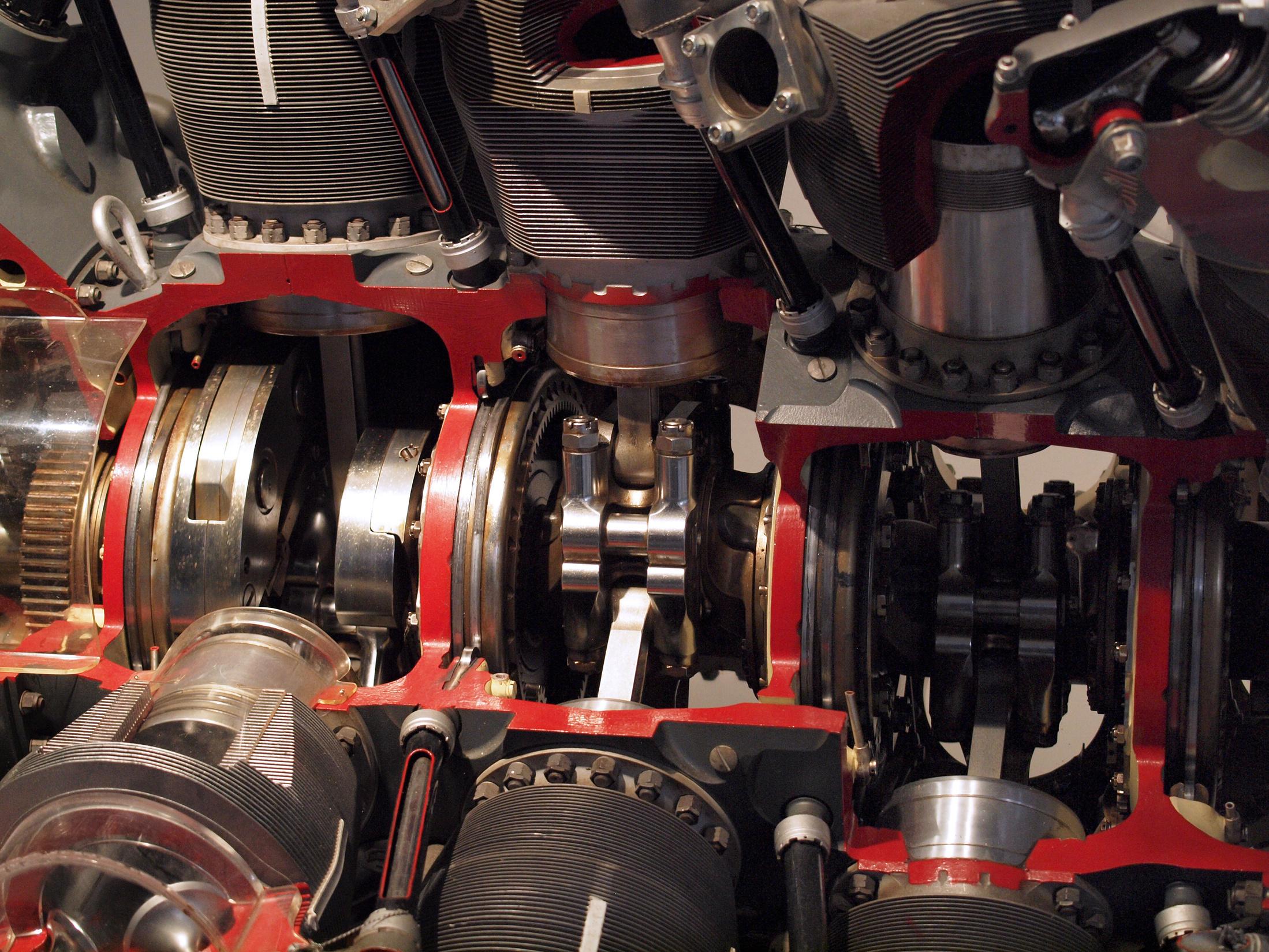












Originally established as a civil engineering firm in the 1960s, the company was founded by Terry Mallaghan and has now become one of the leading aviation industry suppliers in the manufacture of airport ground support equipment, producing highly acclaimed GSE products to an ever-expanding global network of customers.
Mallaghan counts some of the world’s leading airlines and ground-handling companies among its prestigious clientele.



All Mallaghan GSE products are tailored to customers’ own specific requirements. With elite expertise in the field of engineering sciences, Mallaghan can ensure all equipment is at the fore of advanced technologies, and with a keen emphasis on environmentally friendly applications, this guarantees that the customer receives the best-possible return on their investment.
The company, located in Ireland, attributes its move towards the manufacture of high-quality GSE following extensive research throughout Europe and the Middle Eastern regions. Terry’s keen pursuits took him to many parts of these regions where he identified a need within the aviation industry for schedule streamlining.
The company then embarked upon a detailed programme of research and development, the result of which has been the LBT90 and BT92, a unique multipurpose aircraft loading system, which still remains a firm favourite within the current-day range.
The range includes:
• Catering & cabin cleaning trucks
• Motorised & towable passenger stairs
• Toilet & water service trucks
• Medical lifts
• Airbus A380 GSE range
• Bendibelt / baggage handling systems
• Maintenance platforms & rapid-delivery vehicles

• De-icers


The complete Mallaghan product range conforms to all IATA regulations and EC directives. The company is also ISO 9001:2015-certified and places a keen emphasis on complying with all external regulatory bodies associated with the manufacture of GSE products. This ensures verification of our equipment and peace of mind for our clients.
After-sales support has long been at the fore of our company and we believe it to be just as important as the performance of our products. Mallaghan makes sure it provides all clients with comprehensive guidance and support in the areas of parts & service, commissioning, training, warranty and technical backup.
McKenna – Sales Director sales@mallaghangroup.com mallaghangse.com LinkedIn: @mallaghan




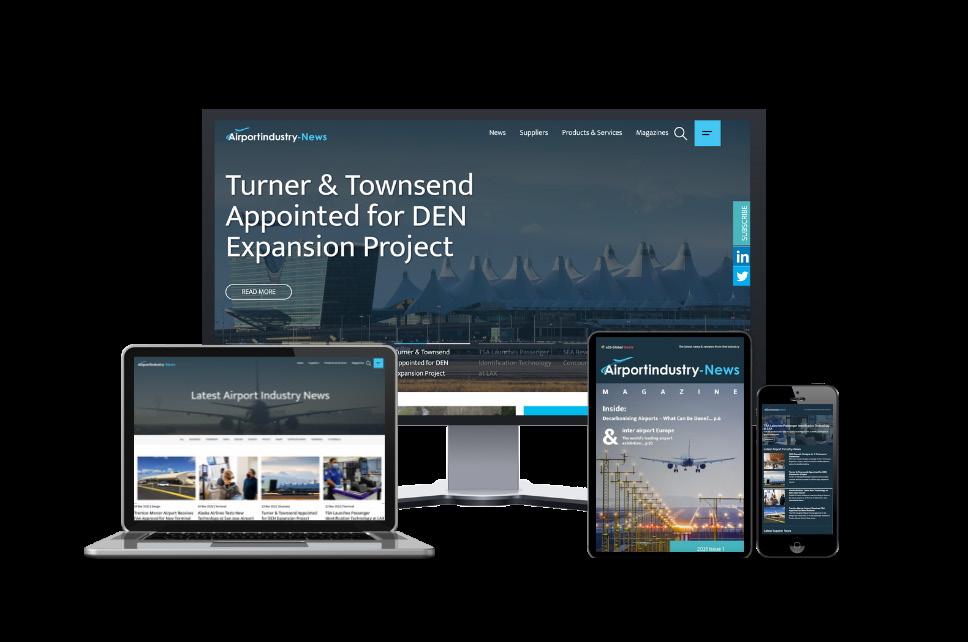

Airport CEOs and managers face a barrage of challenges at the moment. Sustainability is right at the top of this list. Public and political pressure has forced airports to move from paying lip service to finally acting on reducing their carbon footprint.
At SITA, digital travel remains a critical area of strategic focus. SITA provides the next generation of self-service technology infrastructure on which digital identities rely.


Airports are looking for efficiency and sustainability gains. A look at how a partnership between T-Systems and Frequentis will drive the digital transformation, improving flexibility and resilience, while increasing commercial success.


Airport CEOs and managers face a barrage of challenges at the moment.
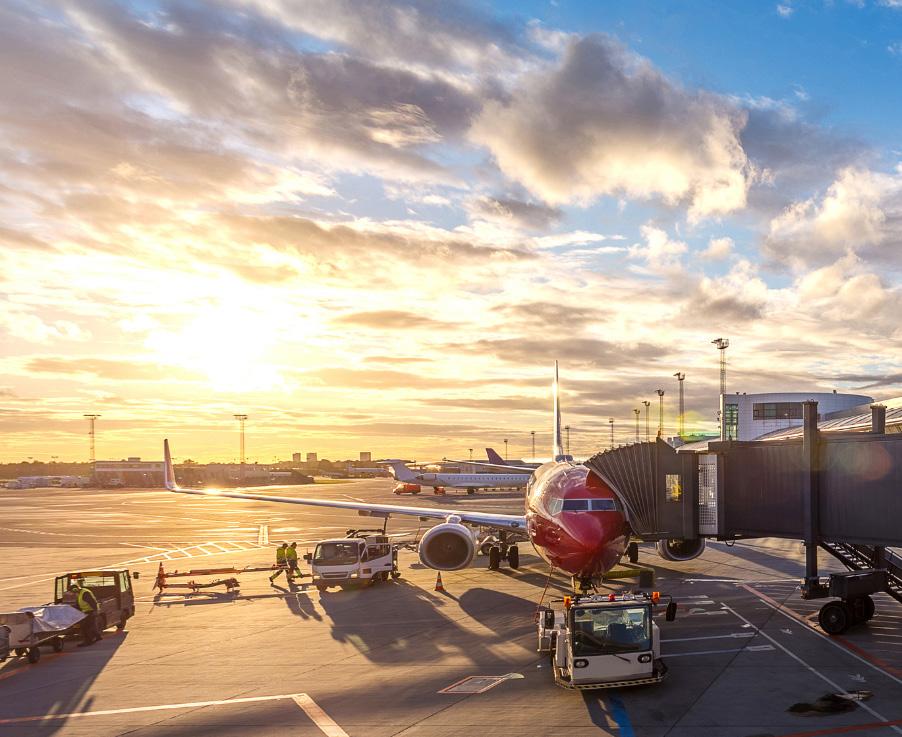
Sustainability is right at the top of this list. Public and political pressure has forced airports to move from paying lip service to finally acting on reducing their carbon footprint. The new world reality is that for many airports being sustainable is directly tied to their licence to operate or at least to their licence to grow.
Secondly, there is the lack of availability of human resources. This lack of human resources causes airports and airlines to cancel flights and/or artificially cap capacity in order to avoid extreme situations. It is particularly painful that after two and a half years of waiting for demand to come back, the industry is now not ready to serve this demand.

Thirdly, in aviation, safety is always a priority. Like sustainability it is often directly tied to an airport’s
licence to operate and with high amounts of new and inexperienced staff, there has been a sharp increase in safety situations and incidents.
Lastly, there is the issue of capacity. Passenger numbers are growing exponentially and airport space can’t always accommodate the additional flights.
Airports and airlines own their data but it is often not used, particularly visual data. Only recently as a result of breakthroughs in the fields of artificial intelligence (AI) and advanced computing has it become possible to analyse unstructured data, namely audio, video and photos. Airports are the ideal environment for using computer vision technology as they have lots of cameras. With AI, computer vision software can be used to analyse the video feeds from these cameras and to create data previously not captured.
Another reason why airports in particular are good environments is because of their complexity and multi-stakeholder environment. Meaningful and traceable communications are critical and the cost of inefficiencies, resulting in additional infrastructure requirements are expensive.


One area where real-time turnaround data can help airports to achieve their sustainability targets, is with reducing aircraft holding / queueing times. For the first case we will refer to results Assaia has achieved together with Seattle Tacoma International Airport. At this airport, during peak hours, there are often arriving aircraft holding for their target gate to become available. The holding occurs either as a result of early arrivals or (more commonly) delays of departing flights. Previously, it often occurred that the target gate of a holding aircraft would become available but the ground controllers would not realise this. Therefore, we now have a situation where an aircraft is holding while its target gate is actually already available. Through the use of Assaia’s computer vision system, the moment that the aircraft leaves the gate is registered and the ground controller is notified that the next aircraft should be cleared for taxi-in. As a result of this automated workflow we have reduced excess holding times at Seattle Airport by almost 80% and airlines’ kerosene costs have decreased by roughly 1 million USD per year. CO2 emissions have been reduced by 1.5m kilograms per year.
There is a second, even more significant case related
to aircraft holding times. Before we dive into this use case, it is good to explain how we use real-time turnaround data to predict aircraft off-block times. Again, AI technology is used in order to create an algorithm which continuously predicts for each aircraft when it is going to depart. Assaia’s Predicted OffBlock Time (POBT) algorithm has been validated by an independent third-party research institute to be much more accurate than current-day alternatives. The POBT can be used to clear a holding aircraft for taxi-in before the gate is even available. For example, if the average taxi-in time is nine minutes and the POBT for the target gate shows that there are nine minutes remaining before the departing aircraft clears the gate, the next aircraft can be cleared for taxi-in. The arriving aircraft will then arrive at the gate just as the other aircraft pushes back. This means that the average aircraft holding time will be reduced with the average taxi-in time (nine minutes in our example). The effect of this use case on an airport like Seattle would be fivefold of the previous case.
A last interesting application of real-time turnaround data for sustainability objectives is related to minimising the use of aircraft auxiliary power units (APUs). The APU is a generator, typically located in the tail of an aircraft and is used to generate electricity; it is also the source of excess CO2 emissions. A computer vision system can detect if the ground power and pre-conditioned air have been connected. Therefore, if this has not happened the system can alert the ground handler or airline in order to get it connected as soon as possible. On the departure end, the POBT can again help ground handlers to determine the ideal moment to disconnect ground power and pre-conditioned air. With one of our customers we have realised an average increase in ground power connection time (thus time that the APU did not have to be on) of four minutes
per flight. This saves 22kg of CO2 emissions per flight while it also saves the airlines money. 22kg might not sound like much but for a busy airport it accumulates to significant amounts over the course of a year.
On the capacity front, additional capacity for airports can be generated without building new infrastructure. First of all, it is good to realise that gate capacity directly relates to turnaround times. If the average turnaround time reduces, the required capacity automatically also reduces. Thus, reducing average turnaround times by means of reducing ground delays is an excellent way to increase capacity.
Assaia’s computer vision system is capable of issuing an alert when certain turnaround activities do not start on time. Alaska Airlines uses this system in its major hub, Seattle Tacoma Airport. As a result they have reduced their ground delays on average by 3.9 minutes. At another major airport we have even found an average reduction in ground delays of 5 minutes per flight!
Assaia’s computer vision system can detect many different unsafe behaviours and situations. Alerting airport managers to these unsafe situations helps reduce incidents. At a small European airport the system was used to track if a post-departure FOD walk

was executed by the ground handling agents. In case this FOD walk was not detected, airport operatives in the Airport Operational Control Centre (AOCC) were alerted. These alerts would trigger them to call the ground handler to enquire why the FOD walk was not executed and request that it would still be done. As a result of the airport’s increased visibility on this safety procedure and its ability to act, the percentage of flights for which this procedure was not executed reduced from 60% to 35%!
At a major hub airport in the United States, the computer vision system is used to check if the stand is clear of larger objects and vehicles for an incoming aircraft. The system starts checking whether or not a gate is clear as soon as the next aircraft touches down. If the stand is not clear, an alert is sent to the ramp supervisor who will then co-ordinate actions in order to clear the gate before the aircraft reaches the gate. As a result of using the system and this workflow, cases where the gate was not clear upon aircraft arrival have been reduced by as much as 50%!

To view Assaia’s Apron AI demo please get in touch: info@asssia.com


 By Jeremy Springall, Senior Vice-President, Border Management, SITA
By Jeremy Springall, Senior Vice-President, Border Management, SITA
I presented on digital travel at ICAO’s TRIP 2022, the buzz around the industry’s digital directions was palpable.
ICAO, with its Digital Travel Credential (DTC), is one of the driving forces for universal and interoperable solutions for digital identities, which bring with them secure and seamless journeys across the world, enabled by mobile and biometric technologies.
Digital identities mean we will be able to travel from anywhere to everywhere – by air, land or sea – without needing to show our physical travel documents. They will be the master key for unlocking every stage of the journey, from the earliest intention to travel, all the way to destination activities and the return journey. Digital travel – harnessing digital identities – helps us to tackle industry challenges, such as growth in traveller numbers, staff shortages, rising expectations for ‘joined up’ intermodal journeys, government austerity and more.
Passengers get secure, stress-free travel, with the ability to complete processes securely off-airport, meaning fewer queues; and the industry gets more efficiencies, including pre-cleared, ‘ready-to-go’ travellers, with faster approvals and risk assessment before departure.
At SITA, digital travel remains a critical area of our strategic focus. We provide the next generation of self-service technology infrastructure on which digital
identities rely – with integrated data-driven, mobile and biometrically-enabled self-service touchpoints for check-in, bag-drop, border control, boarding and more.

Our digital border solutions enable digital travel at the border for over 70 governments and all G20 nations, while our passenger processing solutions offer biometric and mobile-driven digital journey experiences for travellers, which can be untethered from fixed points in the airport.
As SITA develops and innovates, we recognise the need to evolve to a universal digital identity for travel, not parochial, standalone initiatives for one airport or transport operator. SITA stands with industry bodies such as ICAO, IATA and ACI, advocating for global standards and initiatives. We are honoured to play our part in the Safe & Seamless Traveler Journey (SSTJ) initiative of the World Travel & Tourism Council. That is why we work collaboratively on trials with airlines, airports, border agencies, industry bodies and other partners across the world.
Such a community approach is essential, if our industry is going to deliver the benefits of digital travel everywhere and anywhere, with interoperability and universality at its core.
info@sita.aero sita.aero/digital-travel




The future of travel is digital



Airports are looking for efficiency and sustainability gains.

We look at how a partnership between T-Systems and Frequentis will drive the digital transformation, improving flexibility and resilience, while increasing commercial success.
Aviation’s recovery from pandemic losses requires a lot more than just returning passengers for it to recoup the shortfalls. Reducing airport operator costs is not enough; airports need to look at becoming more flexible, efficient and resilient if they are to even survive.
The lack of air travel during the pandemic has also led to a knowledge loss at airports because of staff cutbacks, adding to the challenge. To fully recover, the focus must be on new processes and technology that will allow airports to improve resource allocation and streamline operations; for this, digitalisation is key. This is a continuous process for airport operators and other involved stakeholders. The ability to act in unpredictable circumstances and potential crises is mandatory. Airport operators must therefore adapt their organisation to the ‘new normal’, preparing for the future and new working methods.


Introducing the Airport Operations Plan (AOP) is a prerequisite for harmonising and synchronising processes and services, with the Network Operations Plan as the link between the airspace and infrastructure on the ground.

Digitalisation is key to improving resource allocation and streamlining operations

Like any other business, airports need a high-quality service to attract customers, which include not only airline passengers but also cargo, retailers, security, ground handlers and airlines, among others. Passenger experience depends on a streamlined process between a whole network of players to keep them moving and ensure any disruptions are dealt with and resolved as promptly as possible. Improving customer experience from door to destination also requires the consideration of all phases of the journey. For this to work, information silos need to be removed and replaced with efficient, modernised processes allowing shared situational awareness across all stakeholders, so they can collaborate effectively.
Some airports have advanced digitalisation efforts in some areas reasonably well, but the challenge remains to cover the whole value chain. Frequentis and T-Systems envisage the seamless connection of air traffic control services and airport operations to reduce delays, increase productivity and ultimately improve passenger experience.
As well as efficiency gains, digitalisation drives the reduction of carbon emissions at the airport and in its vicinity. Transparent processes and a holistic view of airport operations will help to achieve the agreed climate targets.
Based on their products Frequentis and T-Systems support airports with bridging the airside and landside operations to resolve disruptions faster because, in many cases, problems on air- or landside directly impact the efficient operations. To avoid disruptive repercussions, Frequentis and T-Systems integrate and align products from both of their portfolios to drive the digital transformation of the major processes at airports – including those that have, until now, remained untouched.

The digitalisation and automation of relevant workflows will support staff and their individual processes to become more efficient and transparent, while executive management is further supported with continuously evaluating and improving the entire airport operation, ensuring a smooth transition to new working methods at the airport – a big win for all stakeholders.
Frequentis and T-Systems have designed a digital Airport Operations Centre (dAPOC) providing a unique solution which increases the overall airport performance, combining airport operations, firefighting, security control, external stakeholders and, importantly, ATC. This will give air navigation service providers (ANSPs) and the network manager a better understanding and prediction of what is happening at the airport and improve flight efficiency.
Overall, customers need tailored, flexible and scalable solutions to save operational costs. This is also relevant for rethinking the staffing of airport towers, and the digitisation and virtualisation of these services to increase flexibility – also important in disruptive and volatile phases. This goal can be supported with integrated platforms from T-Systems and Frequentis, to enable hybrid cloud operations. A digital driven
Left: Edgar Ziller,Director of Strategy & Partner Management Airports at T-Systems
Data
airport operations plan will improve the predictability and resilience of airport operations contributing to sustainability goals, while simultaneously reducing airline costs.
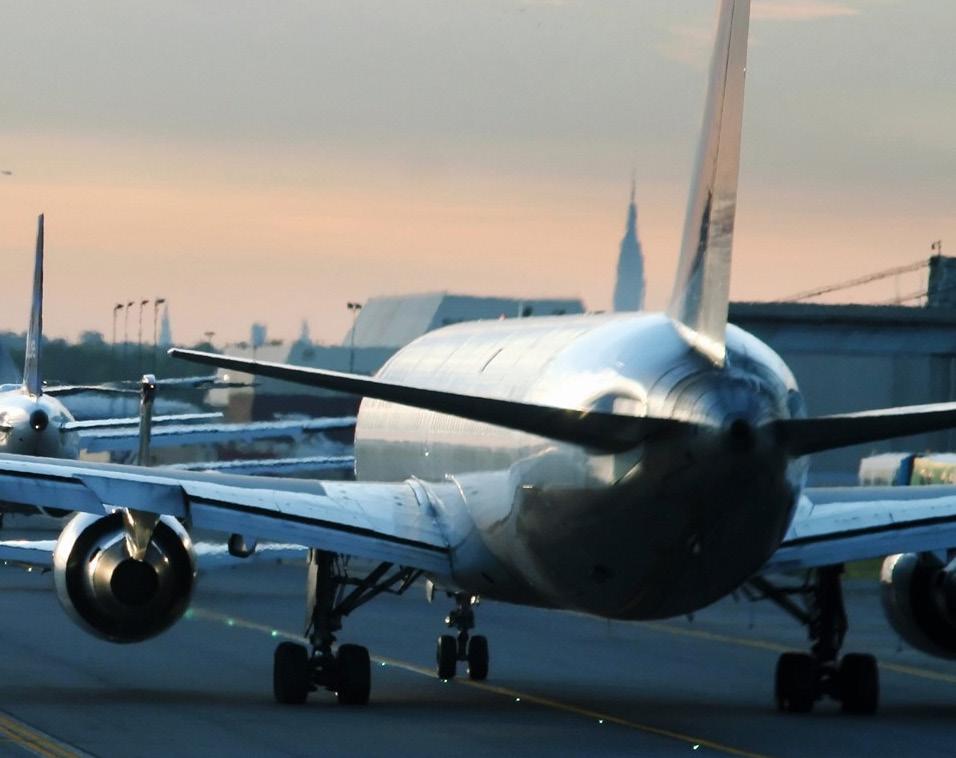


T-Systems has been in the business of airport management solutions for over thirty years and, today, is one of the top four global airport management solution vendors. Edgar joined the airport industry as an IT project leader in 1997 and has held management positions within T-Systems for 20 years. Edgar has gained deep expertise in airport operations and progressive IT solutions.
Frequentis has ATM knowledge spanning 75 years and operational references for many market-leading solutions, which bring further advantages for the enhancement of airport operations. Charly joined the airport industry in 1999. Currently he is Managing Director of the Frequentis drone innovation affiliate AIRlabs Austria GmbH and Director of Airports at Frequentis.
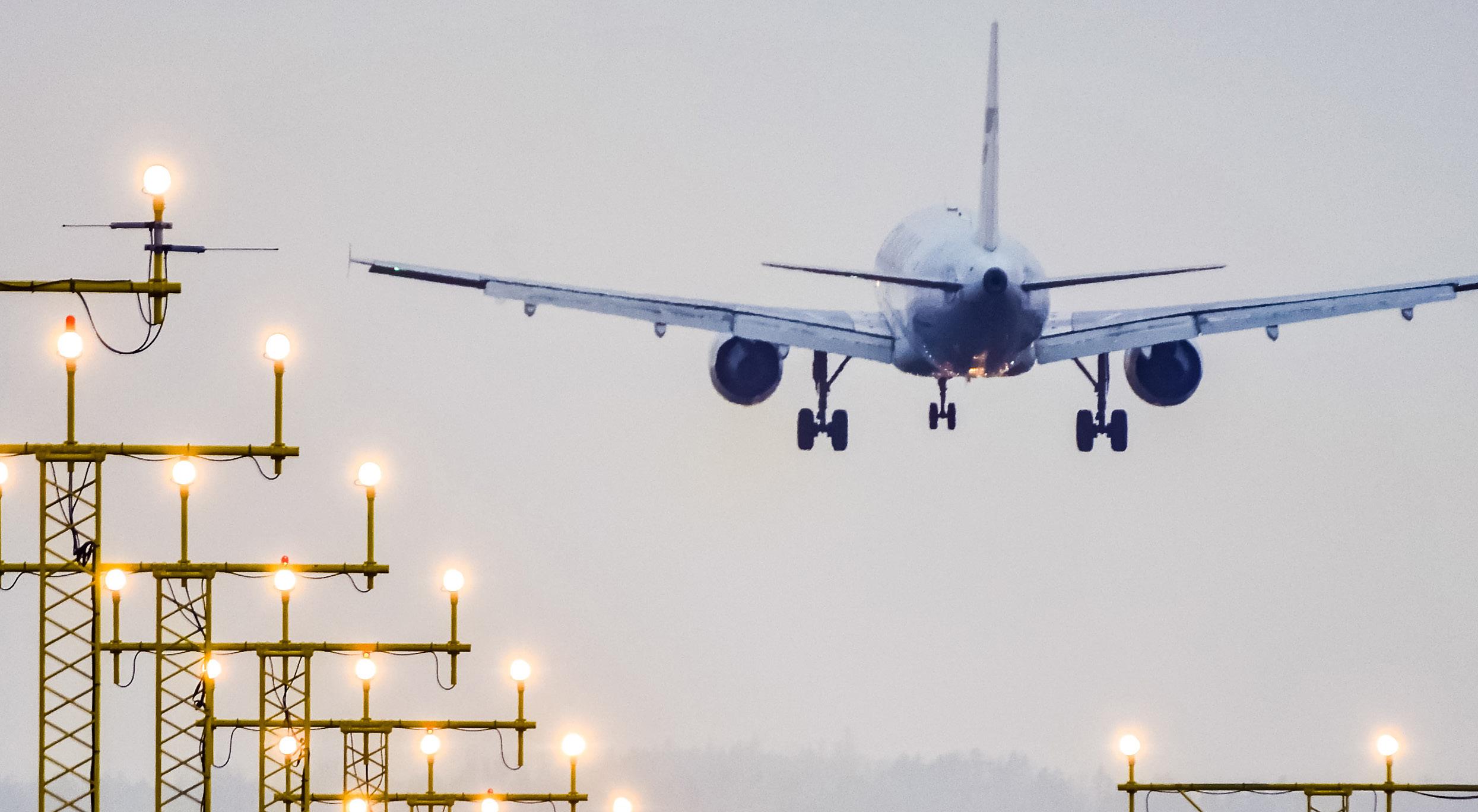


Although air travel is often considered the quickest way to move from A to B over a significant distance, the airport experience indubitably adds time and inconvenience that can deter people from choosing to fly.

p.34

p.37 33

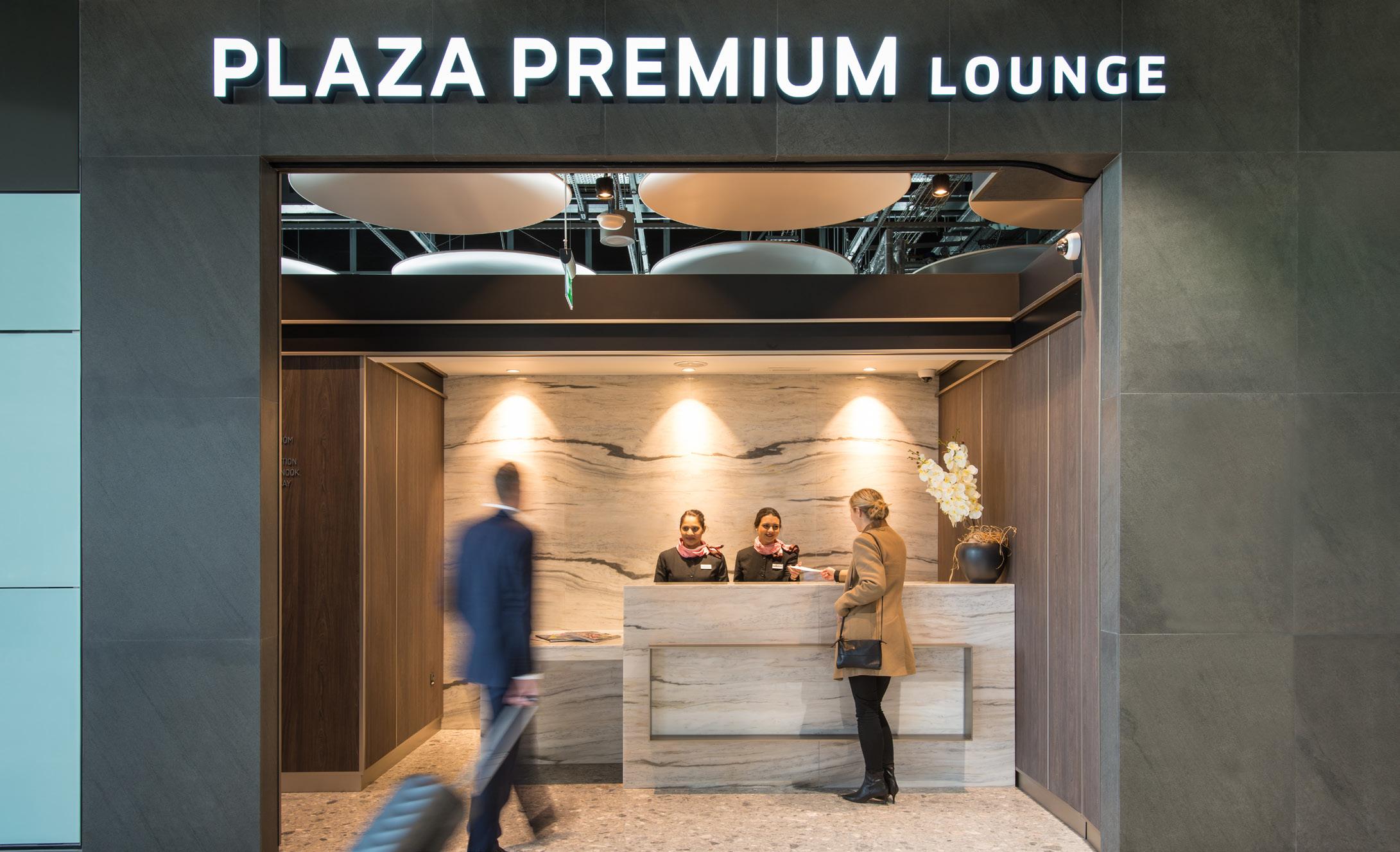
Although air travel is often considered the quickest way to move from A to B over a significant distance, the airport experience indubitably adds time and inconvenience that can deter people from choosing to fly.

Once time is set aside for travelling to the airport, checking in luggage, clearing security and reaching the departure gate, flying short-haul distances may not be the most convenient choice for all passengers. Such factors may also deter people from travelling further afield, as the hassle of transatlantic flights may
motivate holidaymakers to choose a destination that is closer to home and can be reached by road or rail.
To support the return to air travel and promote international tourism following the Covid-19 pandemic, it is thus imperative for airports, airlines and suppliers
to work together to make the airport experience more appealing for passengers. With its mission to ‘Make Travel Better’, Plaza Premium Group aims to accomplish this.

Airport accessibility plays a key role in enabling passengers to use air travel. Although many people choose to drive to the airport to efficiently transport themselves and their luggage, this puts airport parking and local roads under considerable pressure and comes with a significant cost per car.
Meanwhile, passengers who are unable or choose not to drive may find that ground transportation options limit their ability to catch certain flights, even when an airport is well-connected to public transport links. For example, LHR is served by London’s rail and tube network, but the first train to Heathrow Airport from Paddington arrives at 05:47, while the last train leaves Heathrow at 23:25. For early morning flights that require passengers to arrive outside of these hours or for passengers travelling from further afield, it may be necessary to also book a hotel and taxi.

To mitigate this inconvenience and remove the need to organise a transfer from a nearby hotel, in-terminal hotels are becoming popular at some airports. Plaza Premium Group has thus opened landside and airside hotels in airports across the globe, including an impressive 82-room facility nestled in the arrivals hall at LHR Terminal 3.
For added convenience and in recognition of the varied schedules of passengers, these rooms can be booked for periods of six hours, nine hours, twelve hours or nightly. Meanwhile, rooms are offered for solo, couple and family groups and are all equipped with power showers and soothing lighting, as well as small touches like Sleep Tea to help guests feel refreshed.
This service can make flying more attractive by removing the stress associated with travelling to the airport and worrying about arriving on time. Instead, passengers staying at an Aerotel facility can wake up and simply walk upstairs to catch their flight or can use the facility upon arrival to recharge for onward travel.

Likewise, some passengers are attracted to air travel due to the option of accessing premium experiences while waiting for their flight. In 2022, Plaza Premium Lounge was voted the ‘World’s Best Independent Airport Lounge’ at the Skytrax World Airline Awards for the sixth consecutive year. Its London Heathrow Terminal 2 Departures lounge was listed as number one on the Top 10 rankings, followed by its Terminal 3 Departures lounge at Leonardo da Vinci-Fiumicino and its facility at London-Gatwick North Terminal Departures.
These facilities provide travellers with a comfortable space to relax away from the crowds, alongside private suites, shower facilities and a selection of freshly prepared meals, including both English and
international choices. Thanks to the popularity of this experience, the company is expanding its facilities and has recently opened its seventh location in the UK, with the launch of its first lounge in Scotland at Edinburgh Airport.
As the company grows, the Group continues to study the preferences of its customers and meet the varied and dynamic needs of travellers. The new lounge in Edinburgh consequently incorporates facilities such as a quiet area for reading or working, as well as an interactive zone to entertain children and families.

These offerings highlight the Group’s ability to make air travel more attractive to a vast array of customers, from families who find it stressful to travel with
children, to business travellers who require reliable WiFi.
Alongside this UK expansion, Plaza Premium Group aims to double its lounge locations worldwide from over 250 lounges to over 500 lounges by 2024/25. In line with the growing industry trend towards digitalisation, the Group will also incorporate new technologies into its facilities across the globe. Plaza Premium Group Founder and CEO Song Hoi See said: “We believe that digitalisation plays a part in delivering a seamless customer experience.Therefore,placing solid technology which connects,from service delivery to our backend systems,has been our focus this year.”
Through these efforts, Plaza Premium Group hopes to mitigate the inconveniences associated with the airport journey and attract customers seeking a luxurious and enjoyable travel experience. These options will help ensure passengers continue to choose to travel by air, thus assisting the aviation industry in its ongoing recovery from the pandemic.
Plaza Premium Group is comprised of four core business segments – airport lounges; airport terminal hotels; airport meet & greet services; and a range of airport dining concepts.
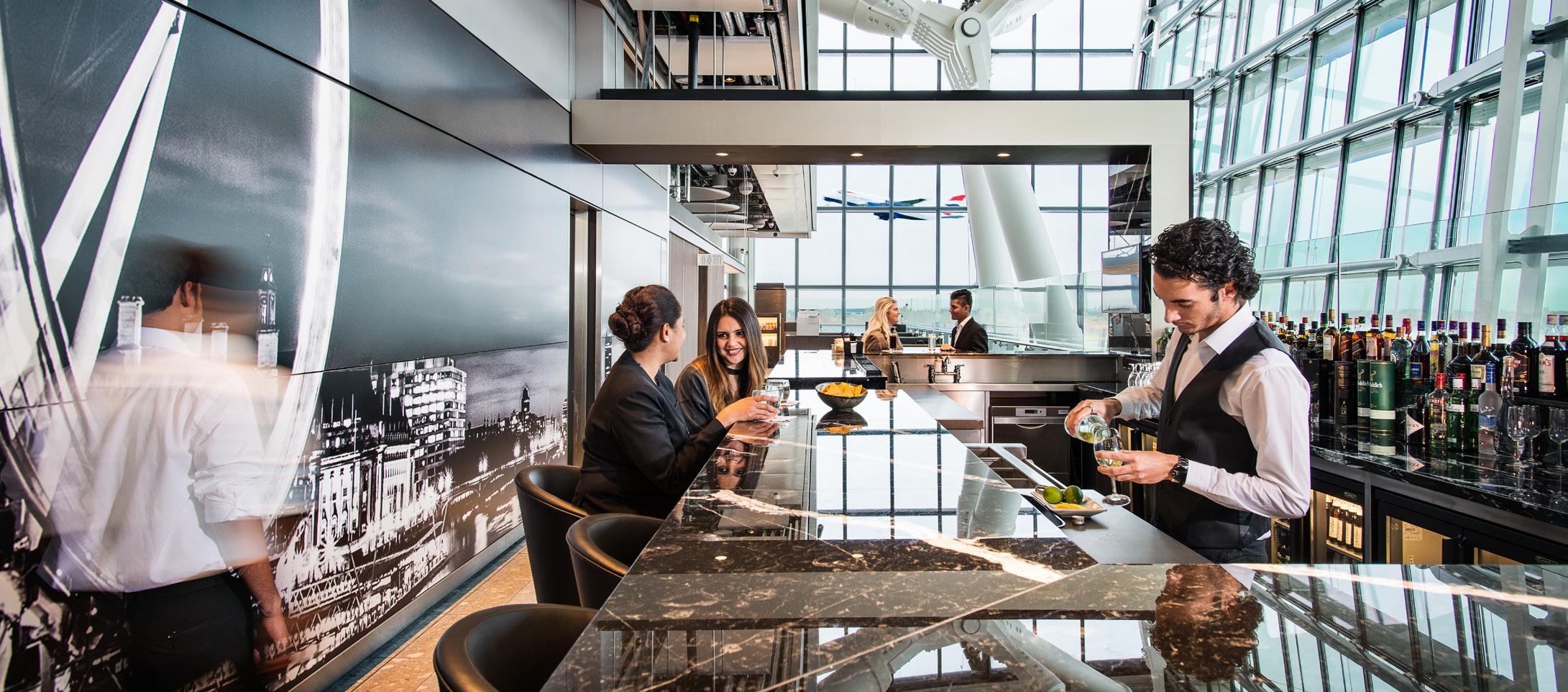


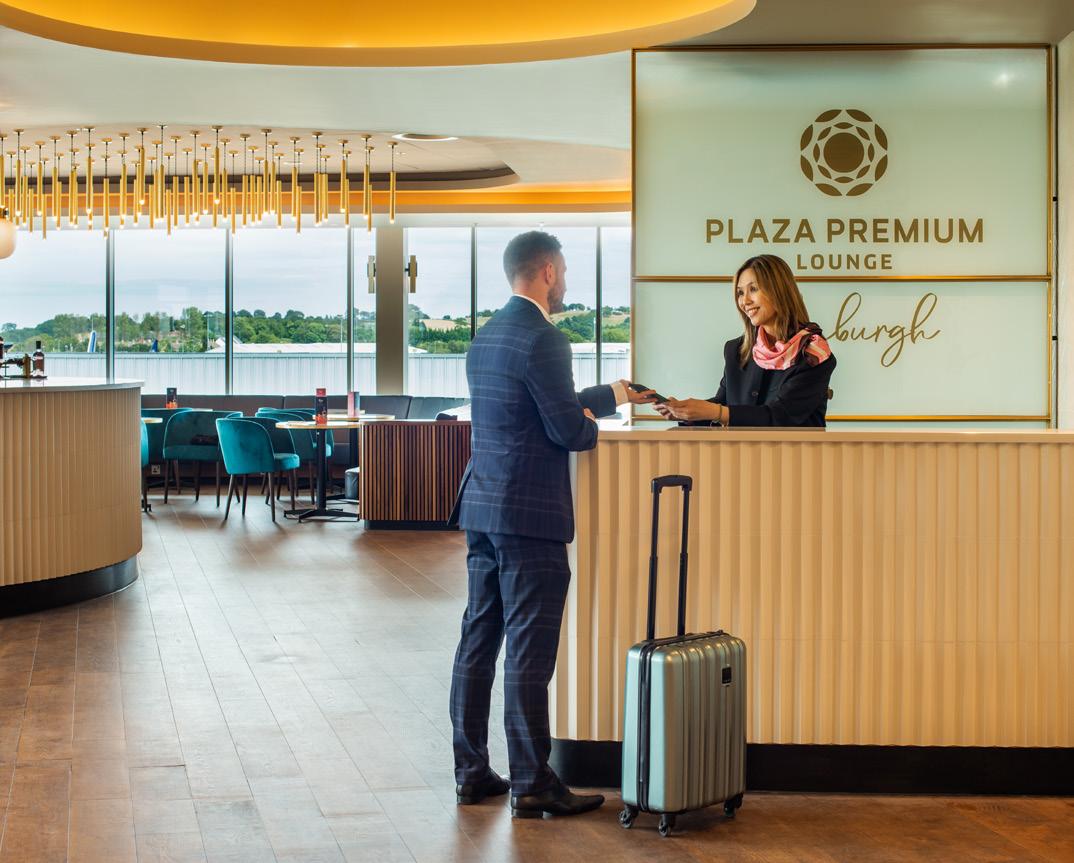 © Plaza Premium Group
© Plaza Premium Group


With over 55 years’ experience in designing and manufacturing seating solutions for the built environment, OMK Design is a specialist in public seating, having supplied furniture to over 350 transportation hubs worldwide.


With headquarters in London and a global network of partners, we offer the complete range of services – free spatial planning, bespoke design, installation, delivery and after-sales.
As a design-led company with a strong focus on passenger experience, our solutions are consistently developed to reflect both technological advances and changes in passenger expectations. With the increased demand for power we offer the highest-capacity power modules and wireless charging options for integration across our product portfolio. Ease of maintenance is at the forefront of our design, to maximise return on investment across product lifecycle.
Our process starts with innovation. 87% of all specifiers rely on the supply chain to introduce new products and trends to the market. OMK’s product range has been designed to satisfy the complete passenger journey –from curbside to gate, with bespoke layouts proven to improve passenger wellbeing, reduce congestion and increase retail footfall. Good furniture can enhance any public area and we have developed a series of systems that offer affordable, sustainable and flexible ways to elevate your space.

By applying our experience and understanding, we can create exciting new spaces or breathe fresh life into
an existing one. Trax, our most modular beam seat and Flite, our high-density compact beam system, both provide solutions for long dwell time locations. Our products enhance passenger experience whilst remaining extremely durable, making them ideal for use in demanding built environments. Seville, our short-sit bi-directional bench is ideal for ancillary areas, and Link, a modular bench system with a unique geometric shape creates various configurations as short-sit solutions.
Transportation hubs are evolving into destinations and we recognise the importance of biophilic design, resulting in positively increased passenger wellbeing, non-aviation spending and repeat route travel. Bridge, a touchdown station provides a convenient place to work and charge devices, with both sitting and standing options. Metro, our latest product is a naturally dynamic, modular seating system, providing futureproof solutions with endless options to reconfigure and connect to nature, with the integration of planters and a natural palette of materials.
Everyday over two million people use our products and OMK has become the industry standard around the world. All OMK products are independently tested by the Furniture Industry Research Association to withstand vigorous use and have a 25-year structural warranty – the longest in the sector.


Officially launched in Paris at the Passenger Terminal Expo earlier this year, Metro is a geometric, free-flowing and reconfigurable modular seating system, designed to bring a more natural aesthetic into public spaces, to positively improve passenger wellbeing.
Manufactured using moulded plywood slats, finished in grade A real wood veneers or alternative laminates, tailored to form a continuous sculptured seat whilst maintaining consistent gaps throughout. The slats enclose the rear of the unit allowing multi-directional seating along the same configuration, to maximise access and seating capacity.
Metro’s seamless form utilises both curved and straight modules with a range of accessories including armrests, tables, power and planters – allowing bespoke layouts to be created. This improves passenger flow and reduces congestion, which in turn creates more usable spaces and encourages retail spending by providing 360-degree visibility of the built environment.
Although designed for short-sit public areas, Metro is focused on comfort. Wider slats ensure better support and we optimised the thickness to ensure it is strong but allows flex. Its low backrest also functions as a perch bench from the other side.
Drawing on our extensive experience of public seating, Metro is a rapid-assembly modular system with minimal components. A future-proof solution with interchangeable slats that can be replaced with armrests or tables with power.
When creating large runs, we kept the design clean and minimal to avoid visual clutter. Metro embraces its fixings and uses them as features, following the curves and bends of the run. Placing them at the front enables ease of installation and maintenance, slats can be easily replaced with minimal downtime and no specialist tools are required.
Concentrating on its lifecycle and unlike traditional public seating, no plastics were used and the plywood slats can be easily separated from its steel frame, resulting in longer service life and less waste. The sustainable materials and finishes selected reflect nature whilst retaining the durability that OMK is known for.

Watch our video.
Simon Branston Business Development Manager +44 (0) 20 7631 1335 enquiries@omkdesign.com omkdesign.com





When you need metrology solutions, think CoMech. CoMech has been around since 1985 and continues to grow year on year.
CoMech Metrology is well known in the rail sector and it’s where its roots really began. However, CoMech has expertise and proficiency in the automotive and aerospace sectors too.
CoMech Metrology has worked with some of the biggest names in the UK transport industry and they trust CoMech for its solutions. In addition, CoMech provides accredited calibrations to many other national brands too.

We pride ourselves on making measurement solutions stress-free and more accessible. We keep up with changing regulations and innovate new technology for compliance within the industry.
One thing about CoMech is we’re hungry for growth and we’ve gone from strength to strength over the years, not just growing our team but keeping up with and innovating for new technology compliance and regulations within the industry.

The expansion of the company led to moving the compliance, administration, sales, marketing, logistics

and finance departments to the RTC (Rail Technical Centre) in 2016. In 2021 following further growth, these departments along with the electrical and pressure calibration departments were then moved to larger premises on Pride Park. This was a significant step towards providing scope for future growth into other sectors in addition to rail – such as aerospace, automotive and general high-tech engineering.
We’ve never quite lost the ‘small business’ care though. Our team works together to give our customers the best experience, as we like to say at CoMech, we’re big enough to deliver but small enough to really care.
The home to our ever-growing team and accredited laboratories is located at the centre of the UK’s rail industry in Derby, East Midlands. The rail sector feels like home to us since this is where our roots began, but in 37+ years of service, we have developed expertise and proficiency in various other industries including: aerospace, engineering and food & beverage.
If you’ve heard of CoMech it’s probably because our reputation for quality and trust has led us to supplying some of the nation’s biggest brands. We work tirelessly to make sure our clients receive high-quality, uncompromised service and solutions.
Our talented team works from our purpose-built laboratories and works alongside our customers to find the right solution for all their metrology needs. Our uncompromising commitment to investing in skills, resources and facilities is reflected in the extensive range of services that meet the highest industry standards.
share ideas and fulfil our potential.
• Initiative – We are a proactive and solutionfocused team. We are also a team that is ambitious and aspirational.
• Motivated – We have passion, pride and a positive can-do attitude. We continuously seek to innovate and raise the bar.
• Team Player – We collaborate, support and motivate each other. We all roll our sleeves up and get stuck in. We own it and don’t pass it off as someone else’s problem.
• Trust – We look out for each other, our safety and our wellbeing. We rely on each other as a team to deliver.

CoMech provides services for various industries including: railways, aerospace, automotive, food & beverage, utilities, engineering, civil engineering and various other industries.
CoMech is highly experienced in providing preventative solutions and hassle-free services you can trust for the aerospace industry in particular.
CoMech Metrology is an industry leader in offering preventative maintenance to avoid reactive solutions and tracking software for audit compliance whilst proving the go-to place for equipment calibrations and UCAS-approved metrology supplies.
• Integrity – We respect each other, no matter who you are or what you do. We are friendly, honest and act in a professional manner, always.
• Inclusivity – Everyone is equal. We value our differences as a strength. We support each other to
Crucial regulations for safety and performance in the aerospace industry are always advancing, making it essential to keep up to date and compliant. CoMech Metrology offers expert solutions within the aerospace industry to keep companies on track and ensure essential regulations are met.
Where critical precision matters in the aerospace industry, CoMech is there to provide hassle-free solutions. CoMech’s measurement and calibration
services offer precision you can truly rely on time and time again.
Work closely with CoMech Metrology to develop longterm solutions that future-proof companies within the aerospace industry and minimise any costly downtime.

• Compliant Calibration Services – Our in-house calibration laboratories are accredited to carry out calibration of your specialist equipment, regardless of your industry.
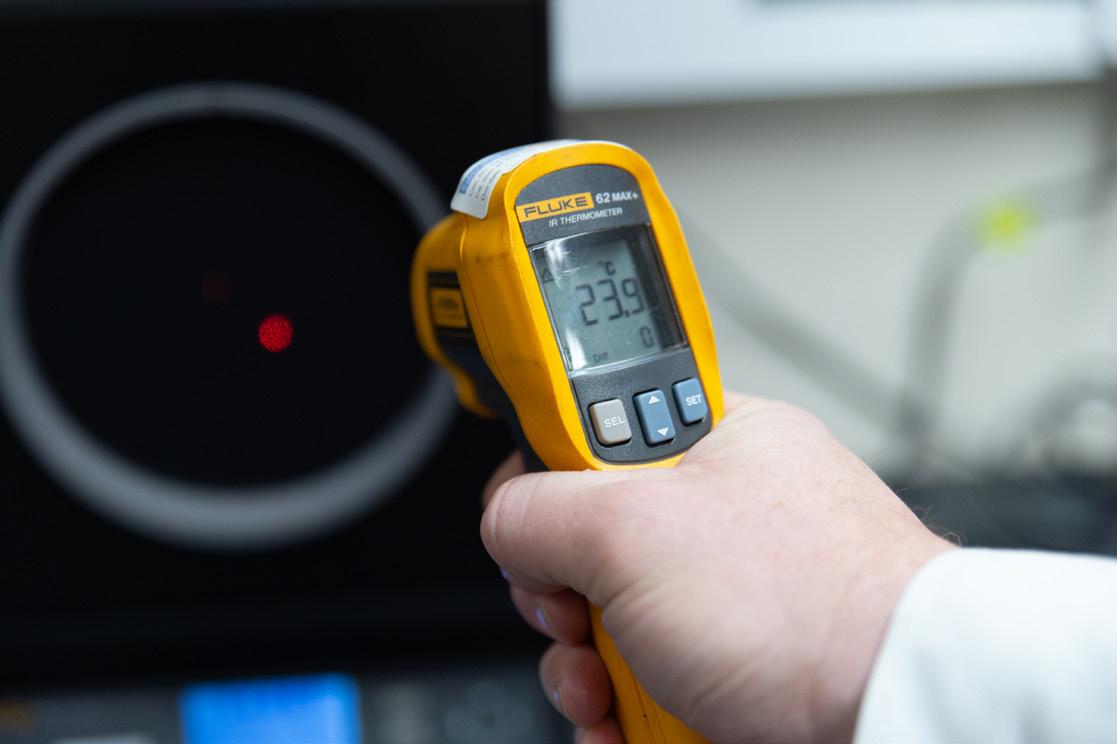
• HAV Assessment – Protecting your employees from dangerous over-exposure to vibrations causing HAVS, by assessing your tools and calculating a safe level and recommending a safe limit for daily use.
• PAT Testing – Meet health and safety regulations with portable appliance testing (PAT) of electrical equipment, ensuring that it is safe to use.

• On-Site Services – Our accredited engineers can come to your site, when convenient for you, to test and assess your equipment to meet your business needs.
• Asset Management – TrackRecordPro is an asset management system that allows you to keep

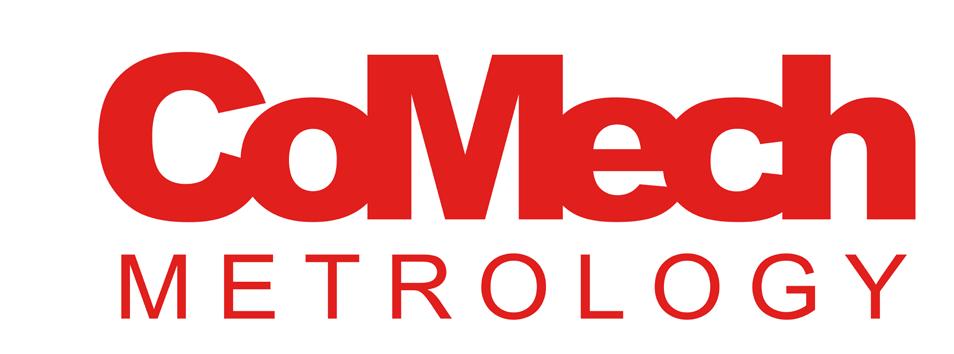
track of all your items’ calibration states, HAV assessments and PAT tests all in one place. It features easily accessible records and reminders ensuring you remain compliant.
• CoMech Supplies – CoMech Supplies is the goto hub for industry-specific specialist equipment, supplying companies with essential products for all your customer safety, tooling and engineering needs.
